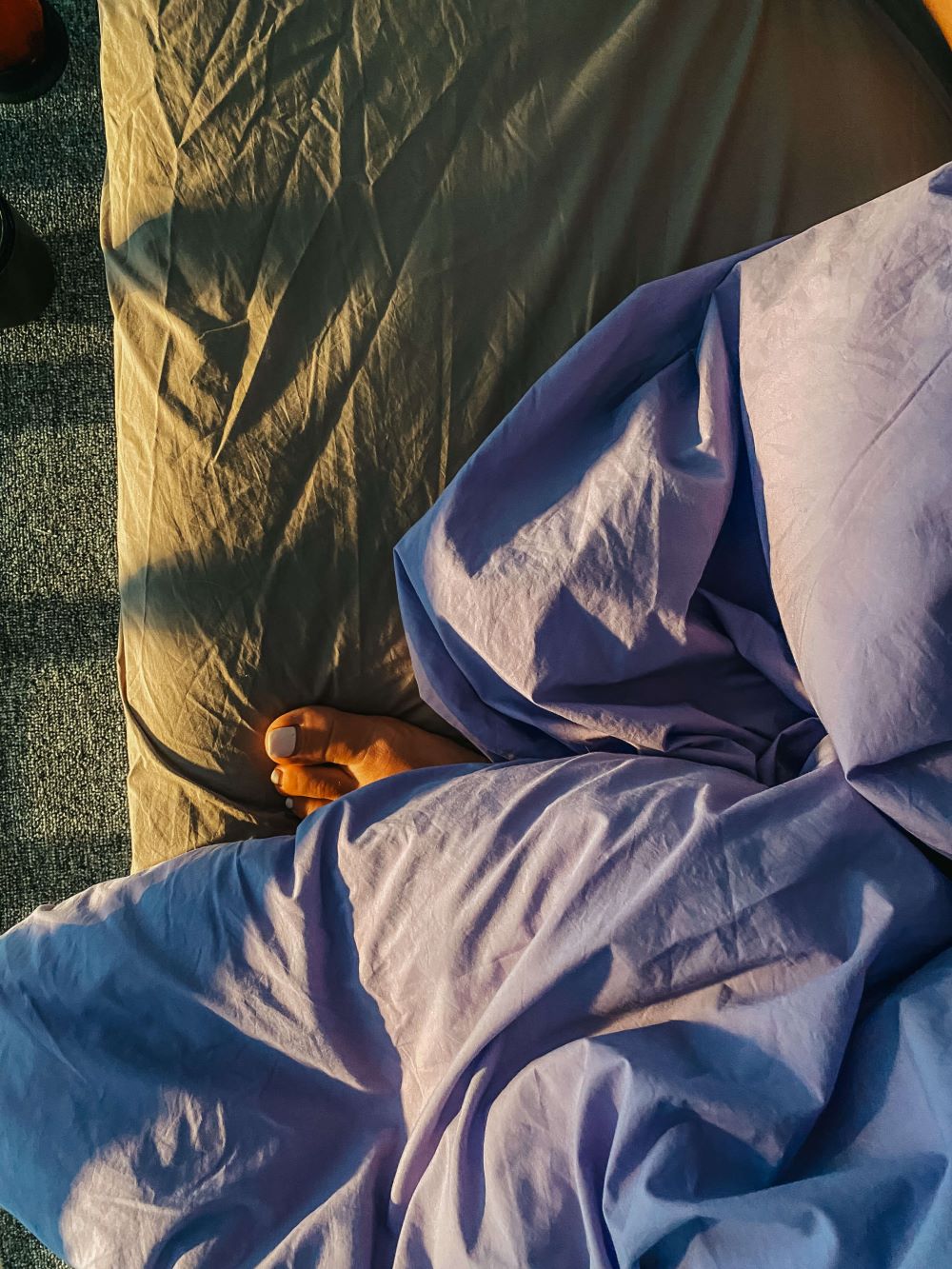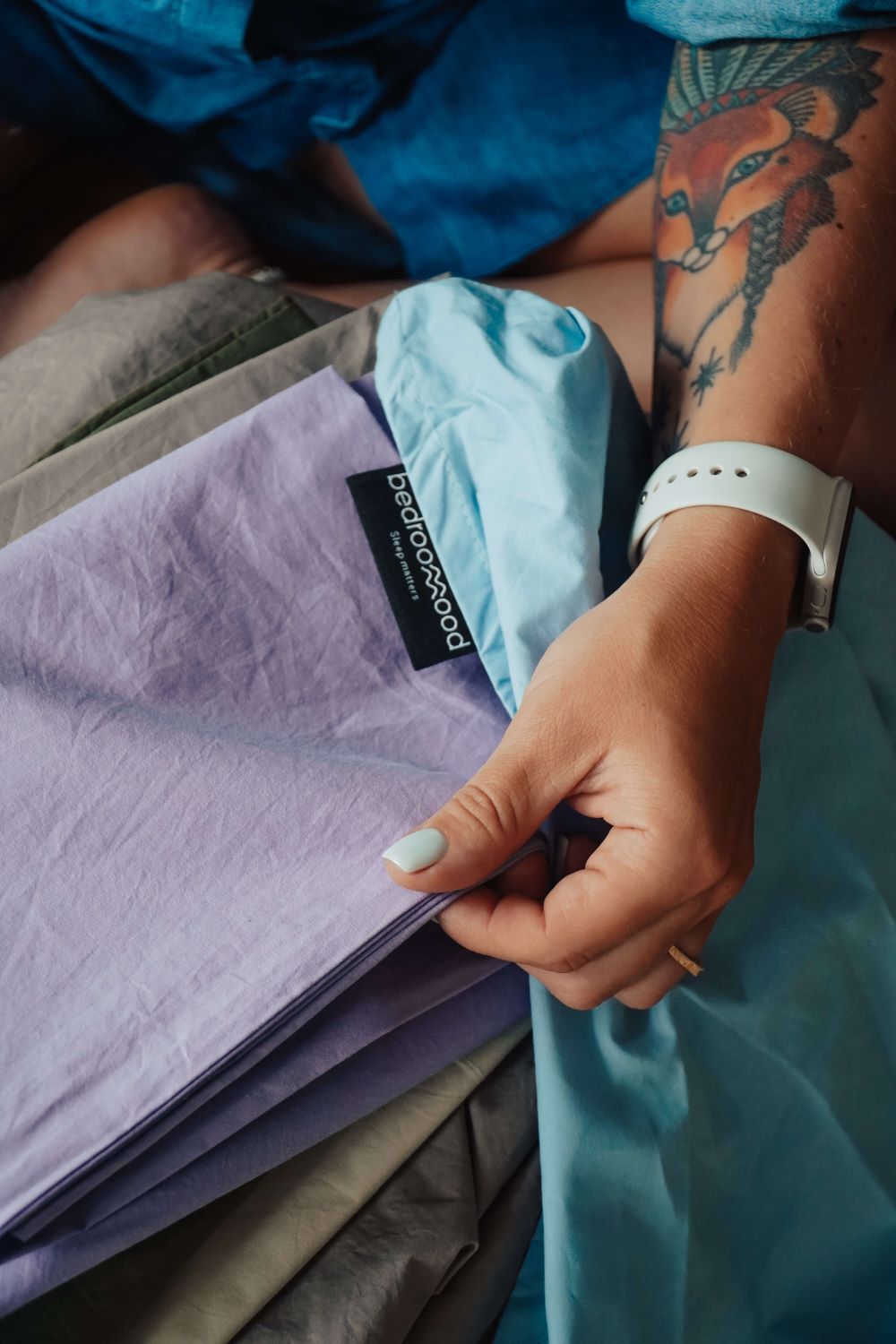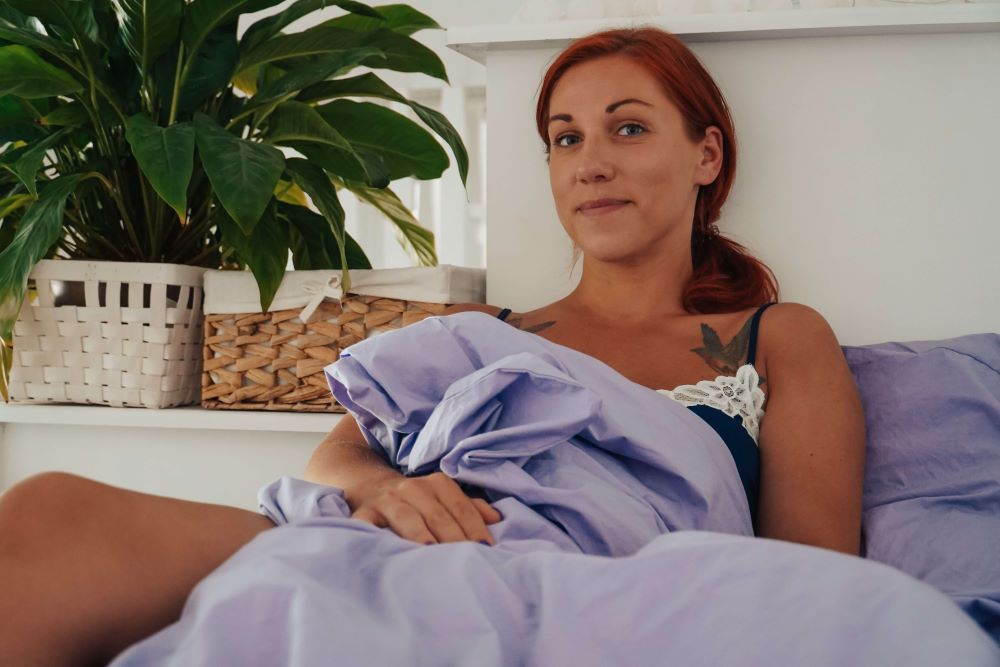
Good Sleep Recipes
I have been deeply interested in the topic of sleep only for the last couple of years, but when I dove into it, I feel like it’s for a long time :) I feel that this is my topic, I read, listen and watch content about sleep. I find it very interesting that sleep is influenced by many things, not just evening rituals. Good sleep really starts in the morning and depends on the amount and intensity of daylight received, as well as on your daily routine, hormonal balance (certainly not only melatonin!), your physical activity, and also the health of your stomach and digestive tract, so good sleep "recipe" can literally consist of food.
I have released a newsletter and several posts on my Instagram account about sleep, but the topic is so broad that I decided to write an article for the blog as well. While writing this one, I realized that I won't fit in one, so I hope I will find time for the second part in the near future to expand the list of ingredients for a good sleep recipe.
This time, in the first blog post dedicated to sleep, I decided not to dive into biohacking, but to start with the simple things - I will cover the "earthly" aspects of good sleep that we can most easily create and control. I'm talking about the bedroom: lighting and colours, bedding, scents, air and temperature.

Lighting and colours
The human body sleeps best in the dark (I believe it’s not something new), but are our bedrooms really dark? I've read the research* that even a small amount of light in the bedroom can disrupt sleep patterns, and even the eye mask doesn't completely eliminate that effect.
It was interesting for me to learn that photoreceptors are not only in the retina of the eyes but also in our skin - it registers light. The area of the skin is large, so even small sources of light are "noticed" by it. Therefore, if we are asleep, but there is light nearby, our body registers this and sends wake-up signals to the brain.
A source of light that disturbs sleep can be something as small as a phone screen that lights up at night due to notifications, the sensor lights of a smartwatch, or the glowing numbers of an electronic alarm clock. In order to create the best environment for sleep, all these light sources should be covered or hidden (for example, simply putting them into a drawer will work).
Also, since very few people live with windows "to nowhere" (forest, meadow, water, etc.), usually light sources come through the windows at night - street lights, neighbours' windows, and lights of passing cars. In order to protect your sleep from such light sources, it is worth having dark and lightproof curtains.

As for the lighting in the bedroom itself, it should be either nonexisting or extremely low brightness with red or dark orange shades. In general, it is best to have a candle instead of a bedside lamp and use natural dim candlelight, but if candles in the bedroom are not acceptable to everyone, then it is worth getting a lamp that has a very soft red/orange light. There are such Himalayan salt lamps, they can be one of the best solutions both for the light spectrum and low light intensity, as well as for the healing properties.
Changing the bulbs of the bedroom ceiling lights from white or yellow or red can also be one of the solutions. I understand that it sounds strange, but once you start sleeping better, you will thank me for this advice. It is important to pay attention to the strength and intensity of the light itself - in order not to disturb your sleep, you need to choose the lowest possible lux indicator.
*The research explained: researchers attached a small (coin-sized) light-emitting object to the inner part of a person's knee and studied his sleep in a dark room. That small light source was enough to raise a person's body temperature and disrupt the release of melatonin (the sleep hormone). Such studies have proven that for good sleep it is not enough to cover the eyes from the light, it is necessary to create a really dark environment suitable for sleep.

Bedding
Bedding is one of the most easily controlled aspects of a good bedroom setup. I started investing in beautiful bedding when I started an independent life apart from my parents (um... when was that? I guess in 2008?), but for quality sleep, it's not so much the aesthetics as the physical properties of the bedding that matter.
Therefore, this spring, when we moved into our new home, I made the mature decision to start from scratch, prioritizing the maximum quality of the bedroom space. Better fewer, but better.
Quality costs money. It is important to remind ourselves that first of all, quality costs our health, so we need to save elsewhere. I used to have a closet full of bedding, but now I have two sets of bed sheets (for starters!) from the Lithuanian Bedroommood bedding brand, which gives the highest priority to quality.
Natural fabrics, fillings and breathability are the important features of bedding for a good night's sleep recipe. Earlier, when choosing bed sheets, I thought that cotton is cotton and that's all there is to know, I had also discovered and liked cotton sateen, but when moving into a new home, I took the time to read and realized that for the sake of quality sleep, I want to try percale bedding.
Percale is a strong, densely woven cotton fabric. Percale sheets are non-allergenic, lightweight and highly breathable, so you are neither too hot nor too cold. You don't sweat under percale bedding because it adapts to your body temperature and therefore is suitable for use both in winter and summer. This was important to me - I wanted one good product, suitable for year-round use both at home and on the farmhouse.
From an aesthetical and practical point of view, I really like that percale is matte and does not need to be ironed after washing. By the way, it is not necessary to iron the bedding, because ironing "closes" the surface of the covers and all fabrics become less breathable. I understand that some of you don’t like unironed bedding, but in order to achieve better quality and healthier sleep, don't overdo it with ironing.
One thing that surprised me about percale is that it is crispy and crunchy. Before choosing it, I had already read that it rustles more than other cotton fabrics, but I was still surprised. Although it was unexpected, I really like it. The crunchiness enhances that "just out of the dry cleaners" feeling of freshness and newness.
I chose Bedroommood, because they focus on quality and sustainability, and make bedding in Lithuania from the highest quality Oeko-tex certified Egyptian cotton. Looking into the future, I feel that I have made a good choice, because Bedroommood does not "bake" new collections every season, but tries to ensure that all bedding colours match each other, and you can fill the home textile base at your own pace, taking into account the real need for new bedding. I chose the forest colour for the farmhouse, and lavender for our new home, but these colours also go really well with each other.

My partner didn't know about these bed sheets or how special they were, but after sleeping the first night in the Bedroommood percale, in the morning he told me "these new sheets are nice". It was good to understand that he also noticed the quality change. From me, I can only add that the quality difference from "normal" bedding is huge. I didn't know it could be like that, but percale really takes sleep to another level.

Temperature
Body thermoregulation affects human sleep cycles. The normal temperature of the human body is considered to be 36.6 degrees, but during the day this temperature fluctuates by half a degree in both directions. When the evening comes and it's time to rest, the human body temperature naturally drops a little so that we can fall asleep more easily. Hot weather can also raise our body temperature, which is why it's so hard to sleep on very hot nights. The body temperature of people with insomnia or other sleep disorders is also usually slightly higher in the evening compared to people who sleep well.
Research* has shown that the best air temperature for human sleep is between 15 and 20 degrees - if the temperature is lower or higher, sleep becomes difficult. Therefore, the temperature of the bedroom should be monitored and adjusted accordingly. Just don't overdo it with cooling and ventilation, because once the bedroom temperature drops below 15 degrees, you won't be able to get quality sleep, even if you've heard the myth that the cooler the better.
If the body temperature rises above the norm at night, sleep quality will drop and alertness will be higher. When experiencing stress and tension, a person's body temperature is also a bit higher, and this is another reason why stress disturbs sleep and why it is necessary to find individually suitable measures to control that stress. By the way, one of the ways to slightly adjust the raised body temperature is a hot bath. An hour or two before going to sleep, warm up in a hot bath - although it may seem the other way around, the warmed body begins to cool itself more intensively after getting out of the bath and lowers the temperature to such a level that helps to fall asleep and stay asleep. This method is suitable for both adults and children who have difficulty falling asleep.
*The research explained: People with sleep disorders were covered with cooling blankets which circulated cool water. Sleep-disordered people fell asleep even faster (within 13 minutes) than people with no sleep disorders (within 16 minutes), and they stayed asleep an average of 89 percent of the time they spent in bed (the same as healthy ones). The results of the study showed that lowering the body temperature helped solve sleep problems in 75 percent of the people studied, which is better than any other method of insomnia management.

Air
When it comes to the air in the bedroom, freshness is the key. Unventilated bedroom air loses negative ions, which are necessary for both energy and relaxation. Living in cities, the lack of negative ions in the air is already a problem (for comparison, the amount of negative ions in pure mountain air is thousands of times higher - that’s why it’s so good to breathe in that fresh mountain air, and why in the mountains we rest and recharge better), but without ventilating the bedroom, this aspect can be a critical disruption to good sleep.
Possible solutions: regularly ventilate the bedroom or have a fan that constantly moves the air. If you want to dive into biohacking, invest in an ionizer.
Another good way to improve the air quality in your bedroom is to have the right plants. For example, the three-striped sansevieria can take in carbon dioxide and release oxygen both day and night (most plants only do this during the day), making it one of the best choices for a bedroom, and it doesn't need much care, light, or water to do its job. Another plant that filters the air well (and absorbs the neurotoxin formaldehyde) is common ivy. I'm a fan of ivy, so we have a couple at home.
Scents
Scents have a great influence on our well-being. We often react instinctively to different scents (we immediately understand whether we like it or not, whether we are attracted to it or not, what feelings it evokes, what it reminds us of, etc.). In the same way, you can enrich, improve, and strengthen your sleep with scents.
There are many ways to diffuse scents: adding essential oils to diffusers (this is my choice for the bedroom, I uploaded a photo of our diffuser above), putting a few drops on the pillow before bed or in the evening bath, you can also use hydrolats, natural high-quality incense or high-quality candles with natural essential oils (these will perform two functions at once -the light source discussed above and the scent). You can also enjoy aromatic tea before bed. Or you can even plant and grow certain aromatic plants (for example, lavender or jasmine) in the bedroom.
Suitable aromas for improving the quality of sleep are:
Goji sage - helps to eliminate the effects of physical or mental stress, it is suitable when you can’t find a comfortable position to sleep, you are distracted or just have all kinds of intrusive thoughts in your head.
Lavender - calms, relaxes and induces sleep, has anti-inflammatory and pain-relieving properties.
Rose - relaxes, reduces anxiety and stress. I once read that the aroma of roses helps to improve learning processes while sleeping (for example, if you have an exam the next day or an important presentation at work, you can use rose essential oil).
Chamomile - calms the body and mind, has an anti-inflammatory effect, and helps to relax muscles when experiencing great nervous tension.
Jasmine - it is very interesting that the aroma of jasmine has a dual effect: it can increase alertness during the day, and at night it can help calm those who cannot fall asleep. One study conducted by German scientists even revealed that of all the scents mentioned here, it is jasmine that improves the quality of sleep the most.
Frankincense - reduces nervous tension, calms the mind, relaxes, has an anti-inflammatory effect and can relieve pain.
The smell of a loved one - I'm not kidding :) When we live together, we get used to the smell of our partner and we don't even notice it, but remember the beginning of the relationship - you really could recognize the smell of the other person's body, right? A study was once conducted in America, the results of which showed that sleeping with a partner's scent (for example, next to a worn T-shirt) improves sleep quality by several percent - as much as taking simple over-the-counter melatonin supplements.
This was my first blog article on improving sleep quality. This time I discussed simple practical tips, and in the next blog post I would like to share the biohacking part as well: what practices, routines and tools can help our body regulate its circadian rhythm and enjoy a perfectly restful and energizing sleep.

